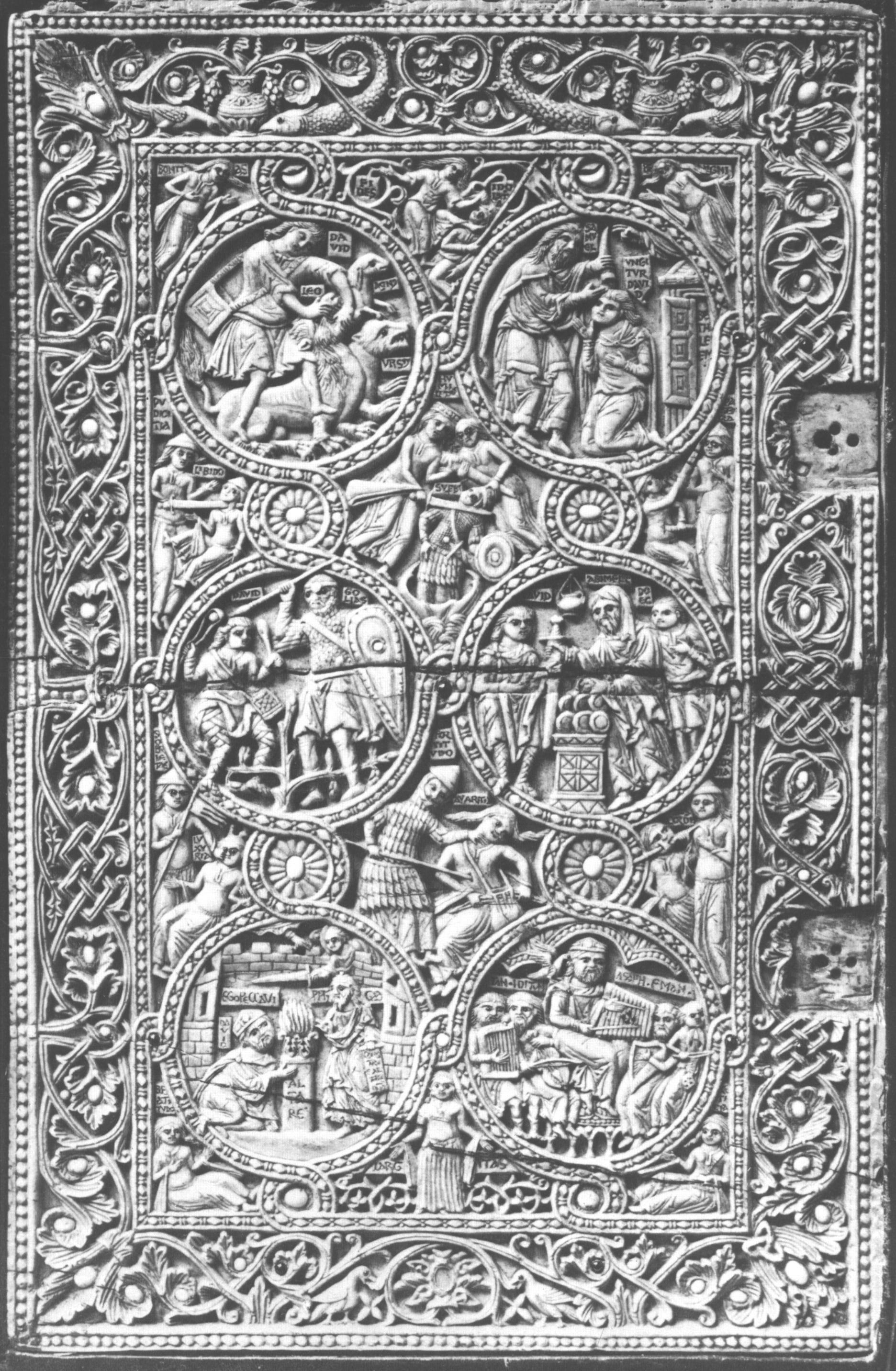
Join Amazon Prime - Watch Thousands of Movies & TV Shows Anytime - Start Free Trial Now
The 'Melisende Psalter'
Eastern Mediterranean (Jerusalem) between 1131 and 1143
Upper Cover

Source: Plate 193 p177, David Nicolle, "An introduction to arms and warfare in classical Islam", in: Islamic Arms and Armour, ed. Robert Elgood, London 1979
193 Queen Melisande's Psalter, twelfth century, Palestine Syria, Crusader workmanship from the Frankish States - armour shows Western, Byzantine, and Islamic types. (British museum)
| In the roundels: | ||
| David kills a lion | David annointed by Samuel | |
| David fights Goliath | David receiving the show bread and Goliath’s sword from Abimelech (Doeg behind) | |
| Murder of the priests and women of Nob | David playing a harp with musicians Ethan, Iduthin, Asaph and Eman | |